Feiyiya Inclined Plate Clarifiers Use Gravity & Innovative Engineering
A gravity clarifier is the most economical method of removing solids from liquids, using natural gravity as the source of energy and it is free. A clarifier simply provides a non-turbulent zone where heavier than liquid solids, suspended by turbulence, are given sufficient time to settle to a quiescent surface. The HEI inclined plate clarifiers are compact units with multiple layers of settling area utilizing less than 25% of the floor space required by conventional clarifiers.
Principle of Clarifiers
A particle carried forward by the velocity of the liquid flow must settle at a rate that allows it to reach the bottom before passing through the clarifer. Thus, particles beginning at a point [a" must traverse some route lying between ab and ab` in order to avoid being carried over the outlet.
If V is the horizontal velocity of the liquid, S the solids particle vertical settling velocity, L the length of the settling device, and D its depth, then particles entering at point A will settle to the bottom of the device only if V does not exceed: S(L/D)Since Vmax / S = L / D then, Vmax = S (L / D)
Inclined plate clarifier, Lanmei inclined plate clarifier, Inclined Tube Settler,High-Efficiency Inclined Tube Wuxi Feiyiya Environmental Protection Technology Co., Ltd. , https://www.feiyya.com
1. Manufactured by our enterprise;
2. Riveted structure is used to connect the cylinder body and back cover, and piston and piston rod for a compact and reliable design;
3. The inner diameter of the cylinder is rolled and then anodized for excellent wear resistance and durability;
4. Piston seals use a heterogenous two-way seal structure, offering compact dimensions and oil retention;
5. Compact structure helps save installation space;
6. Magnetic switch slots are available around the cylinder body for easy sensor installation;
7. Optional mounting accessories in various specifications are available.
Bore Size (mm)
12
16
20
25
32
40
50
63
80
100
Acting Type
Double Acting Type
Single Acting - Push Type
Single Acting - Pull Type-----
Fluid
Air (filtered by 40μm Filter element)
Operating Pressure
0.15-1.0 MPa (0.20-145 Psi)
Proof Pressure
1.5 MPa (215 Psi)
Speed Range (mm/s)
Double Acting: 30-500
Single Acting: 50-500
Cushion Type
                Bumper
Port Size
M5*0.8
1/8"
1/4"
3/8"
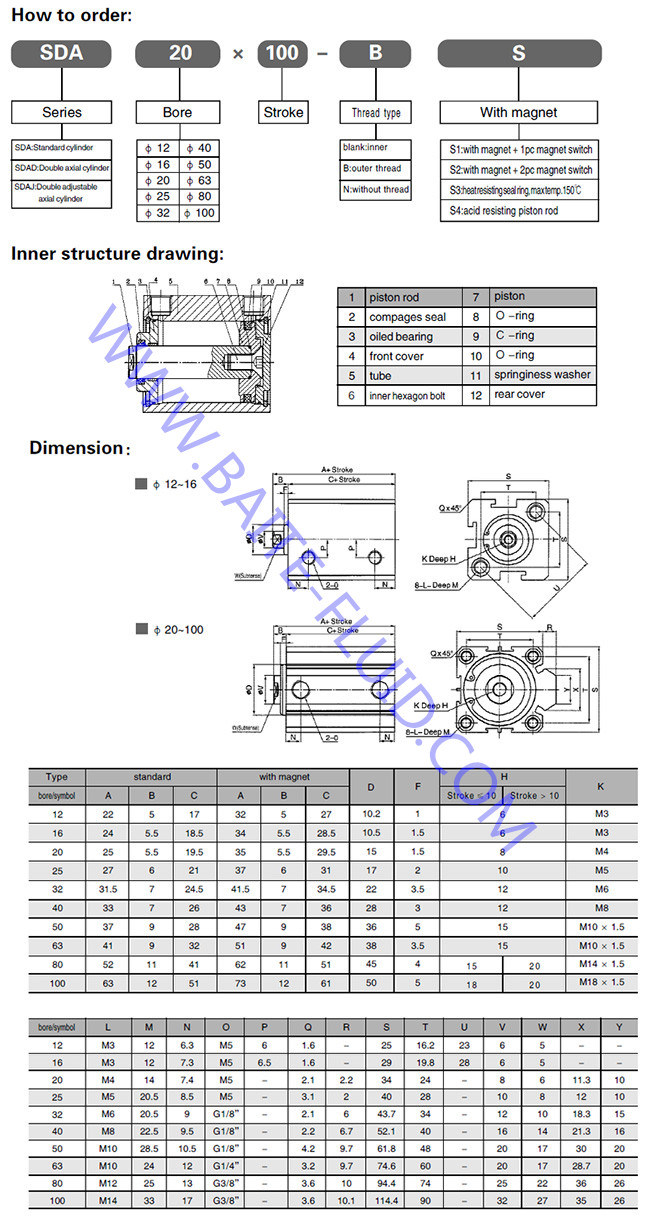
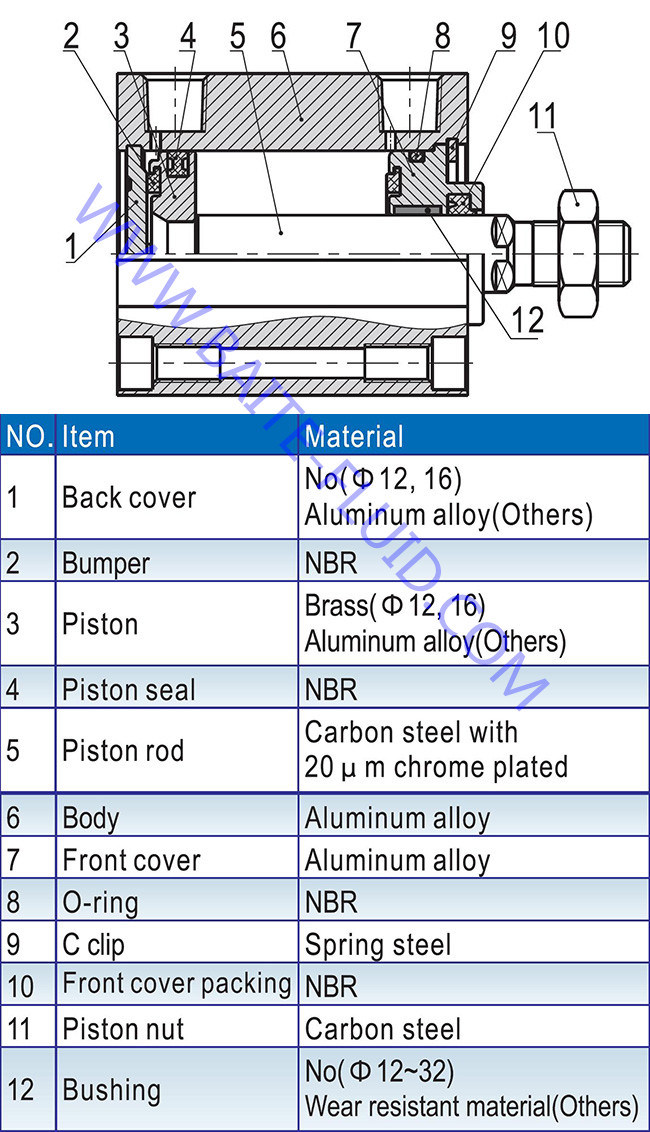
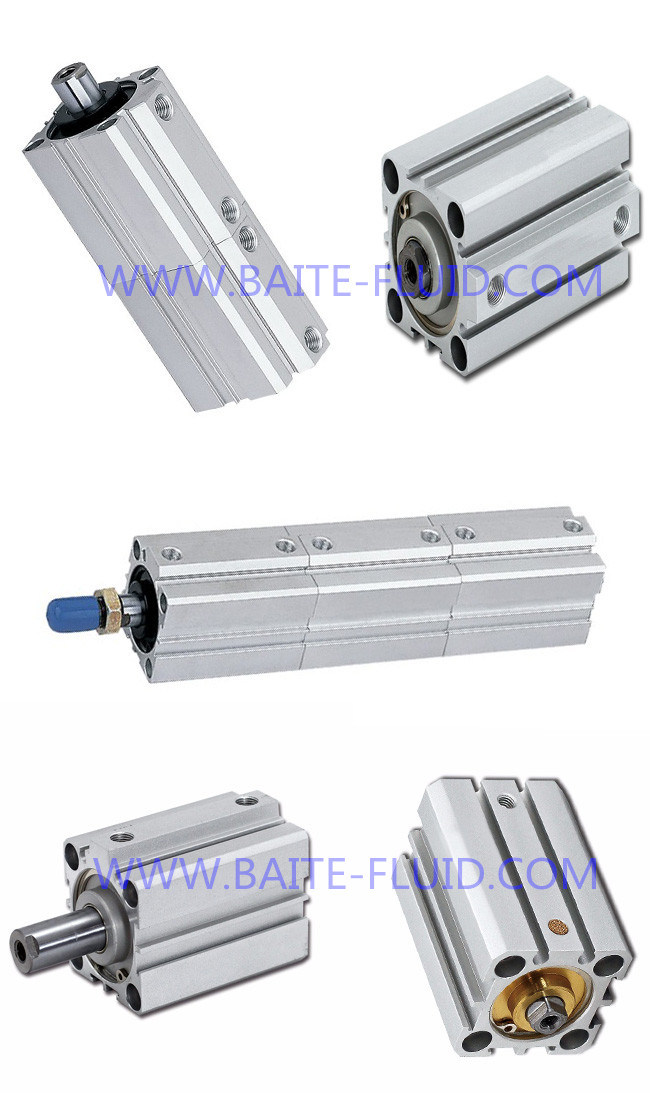
Production Workshop
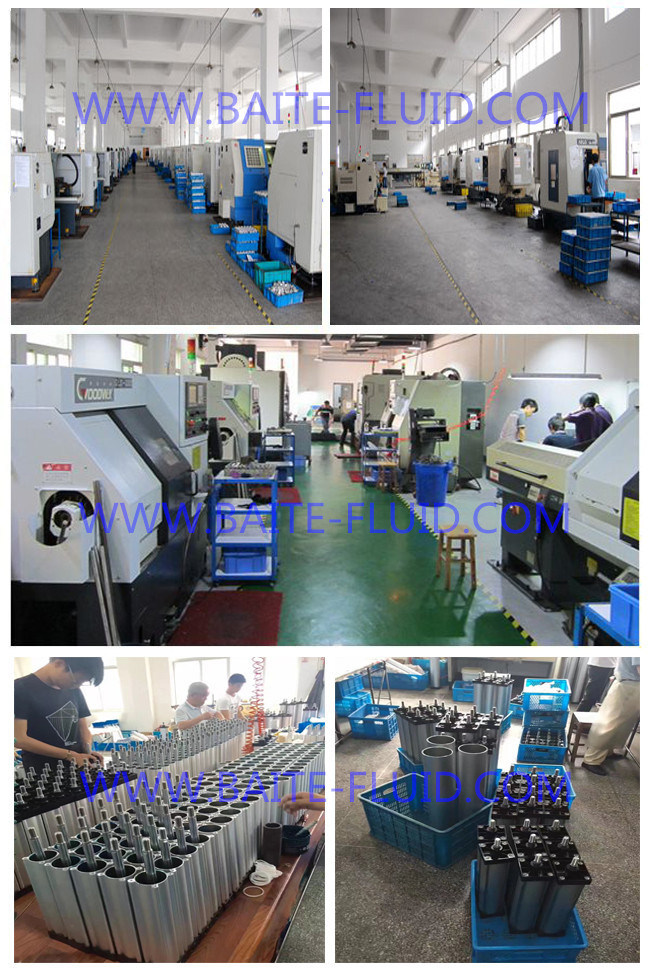
Contact Us
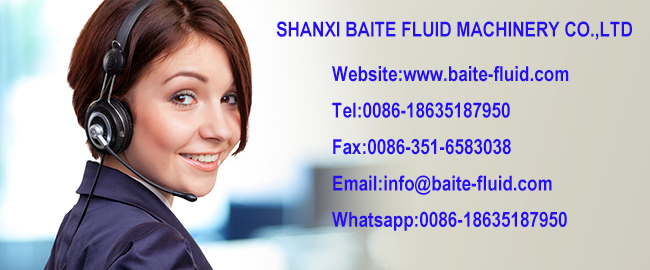
All products can be customized designed. We will supply professional service within 24 hours. Welcome to contact us.
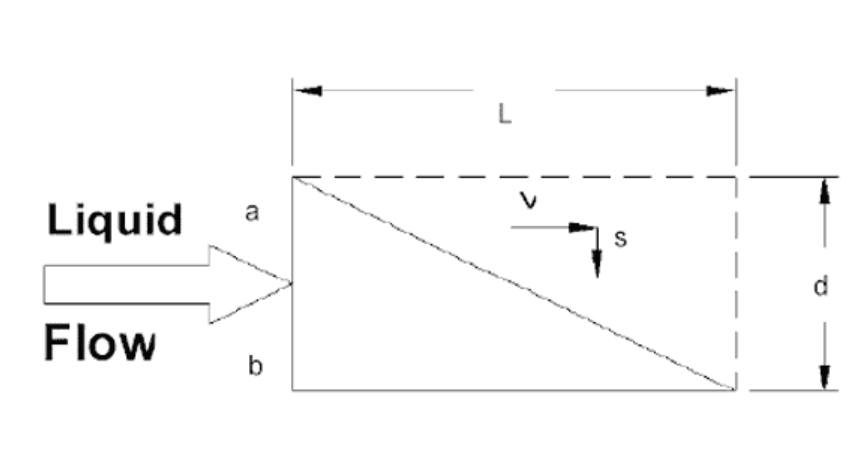
Therefore, the velocity at which a horizontal clarifying device may be operated successfully is directly proportional to its length and inversely proportional to its depth.
This analysis applies to multiple horizontal plate units also. The spacing between plates is usually a few inches as opposed to a depth of several feet in a horizontal tank; therefore, [settling-out" times are dramatically reduced. The flow must be non-turbulent to prevent settled solids from being re-entrained within the moving liquid. Small plate spacing and a large surface area permits laminar flow at higher velocities than large horizontal tanks would allow.
Horizontal clarifying devices become self-flushing if they are inclined at an angle which exceeds the angle of repose of the settled solids. In such cases, flow enters the lower end of the device where settling particles move to the floor eventually sliding back out the entrance. Clear effluent leaves the top of the device.
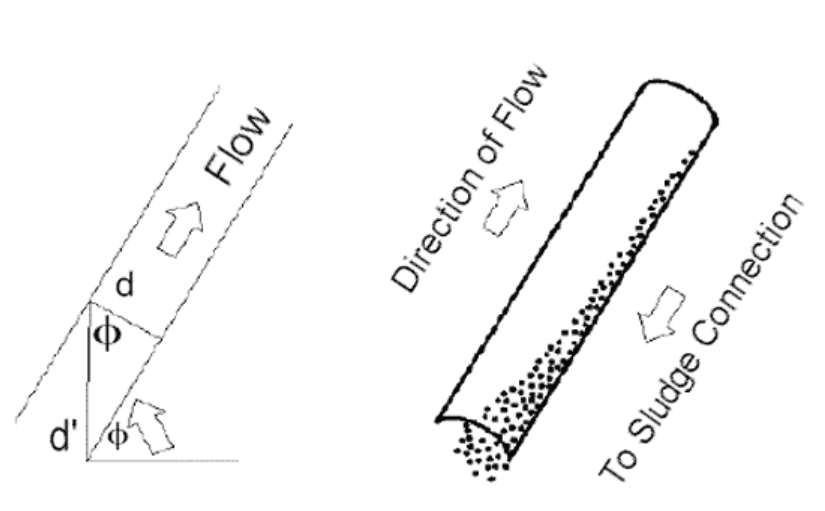 However, when the device is inclined, the furthest settling particles no longer fall through distance D but some longer distance D`. This new longer settling distance D` is related to D by the relation: D = D` cos Ø.
However, when the device is inclined, the furthest settling particles no longer fall through distance D but some longer distance D`. This new longer settling distance D` is related to D by the relation: D = D` cos Ø.
Theta [Ø" is the angle, the device is inclined to the horizontal plane. Thus settling distance is increased by the factor: 1/cos Ø In the case where Ø = 60º, 1/cos Ø = 2.
The maximum settling distance is twice the distance between the plates. It is apparent then that the lower the angle of inclination, the smaller the settling distance. However, the angle of inclination must exceed the angle of repose of the solids to be separated. The previous equation may be modified to express the cosine of an inclined plate clarifying system as:
Vmax = L / (D / cosØ) (s) = L·cosØ / D (s)
Inclined Plate Clarifiers
A reduction of the required floor space is acquired by diminishing the separation between the horizontal plates to a few inches and stacking the settling surfaces. Inclining the plates to provide self flushing, 45º for heavy particles and 60º for light particles, reduces the available horizontal projected area (effective settling area) by a factor equivalent to the cosine of the angle. The surface area diagram (below) graphically compares the floor space requirements of an HEI inclined plate clarifier with the equivalent horizontal projected settling area.
Settling Rate
The settling rate for a specific solids should be determined by standard laboratory tests. Light particles, such as metal hydroxides, usually require a design parameter of 0.25 – 0.50 gallons per minute per square foot of horizontal projected area. These low density solids require the inclined plates to be set at a 60º angle to induce the particles to slide down the plate. Heavier particles (such as sand that easily flow) will readily slide from plates set at a 45º angle.
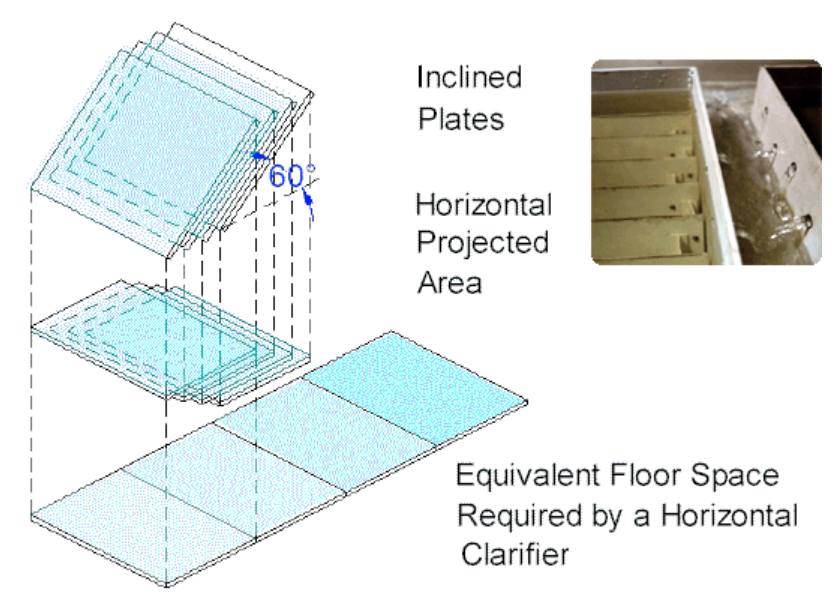
Maximum flow rate of an inclined plate clarifier is based on the flow rate per unit of a horizontally projected surface area. Retention time in the clarifier is not a design criteria. However, attaining optimum performance requires the prudent design to recognize several additional, very important factors.
Model NO.: pneumatic air cylinder BTF-PC-078
Double-Acting Cylinder Type: Adjustable Cushioning Cylinder
Special Cylinder Type: Impact of the Cylinder
Combination Cylinder Type: Pressurized Cylinder
Stroke: 5-3000 mm
Working Pressure: 0.5-10 Bar
Working Temperature: -20°C to +80°C
Model Type: Compact Air Cylinder
Bore Diameter (mm): 32-40-50-63-80-100-125-160-200-250-320 mm
Cylinder Action: Single Acting or Double Acting
Operating Medium: Filtered Compressed Air, with or without Lubrication
Type Standard: ISO 15552, ISO 6431, DIN
Name: Airtac Compact Thin Pneumatic Slide Air Cylinder
Trademark: Customizable
Transport Package: Inner Box, Outer Carton, Pallet
Specification: Standard or Non-Standard as Requested
Origin: China
HS Code: 8412310090
SDA63 Series Airtac Compact Thin Pneumatic Slide Air Cylinder
Product Features
Product Specifications
Product Show